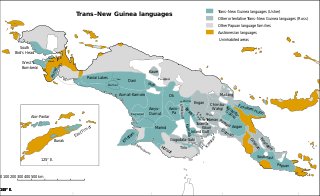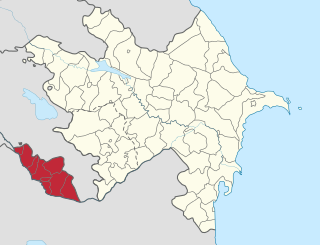
Trans–New Guinea (TNG) is an extensive family of Papuan languages spoken in New Guinea and neighboring islands, perhaps the third-largest language family in the world by number of languages. The core of the family is considered to be established, but its boundaries and overall membership are uncertain. The languages are spoken by around 3 million people. There have been three main proposals as to its internal classification.

K. J. Yesudas is a multilingual singer, singing Indian classical music, devotional, light music, and Film songs. His commercially published recordings span multiple genres.

The Central and South New Guinea languages (CSNG) are a proposed family of Trans–New Guinea languages (TNG). They were part of Voorhoeve & McElhanon's original TNG proposal, but have been reduced in scope by half in the classification of Malcolm Ross. According to Ross, it is not clear if the pronoun similarities between the four remaining branches of Central and South New Guinea are retentions for proto-TNG forms or shared innovations defining a single branch of TNG. Voorhoeve argues independently for an Awyu–Ok relationship, and Foley echoes that Asmat may be closest to Awyu and Ok of the TNG languages. Regardless, the four individual branches of reduced Central and South New Guinea are themselves clearly valid families.

The Mek languages are a well established family of Papuan languages spoken by the Mek peoples. They form a branch of the Trans–New Guinea languages (TNG) in the classifications of Stephen Wurm (1975) and of Malcolm Ross (2005).
The Momuna languages, Momina and Momuna, also known as Somahai, are a family of two closely related Papuan languages.

Xanəgah is a village and municipality in the Julfa Rayon of Nakhchivan, Azerbaijan. It is located 37 km in the north from the district center, on the both bank of the Alinjachay River, on the slope of the Zangezur ridge. Its population is busy with vine-growing, farming and animal husbandry. There are secondary school, cultural house, three libraries, communication branch, club, kindergarten and a medical center in the village. It has a population of 1,212. The Əlincəçay xanəgahı of the Middle Ages is located in the east from the Khanagah village, on the left bank of the Alinjachay River.

Gülüstan is a village and municipality in the Julfa Rayon of Nakhchivan, Azerbaijan. It is located 5 km in the north-west from the district center, on the right bank of the Aras River, on the plain. Its population is busy with farming and animal husbandry. There are secondary school, cultural house, two libraries, communication branch, and a medical center in the village. It has a population of 482.
The Koteka Tribal Assembly is a cultural organisation of the Koteka tribes of Papua. It was established in January 2000 as an outcome of discussions among the elders of several tribes in the highlands of West Papua. The main goal of the assembly is to peacefully, democratically and legally work towards the recognition and protection of customary laws, values and beliefs of the Koteka peoples. Many activists from the organization who were involved in peaceful protests have been tortured and forced into exile.

The Chauás Ecological Station is an ecological station in the state of São Paulo, Brazil. It protects an area of lagoons and marshes in the Atlantic Forest biome, and is home to several endangered species. It is strictly protected, and is not open to the public.

The Central West New Guinea languages are a group of Trans–New Guinea families in central New Guinea established by Timothy Usher, though with precedents in earlier studies.

Brazza River is a river in Papua province, Indonesia. The Brazza River has its source at over 3000 meters of elevation in the Jayawijaya or Maoke Mountains of central Papua in Yahukimo Regency, and flows south to the lowland rainforests of Asmat Regency before meeting the Pulau River, which flows southeast to the Arafura Sea.

The Nakhchivan Autonomous Republic is one of the touristic regions of Azerbaijan with its flora and fauna, climate, and ancient cultural monuments. Nakhchivan is known for its historical monuments such as Momuna Khatun, Yusif ibn Kuseyir, Gulustan tombs, and Garabaghlar. There are other touristic places like Babek castle, Kilit cave, Alinja castle, and Gamigaya in Nakhchivan.










